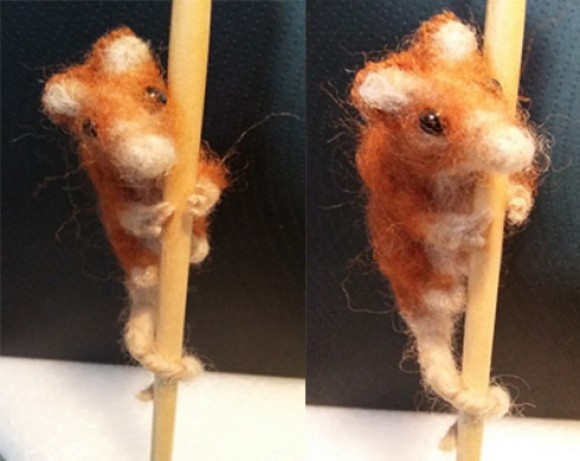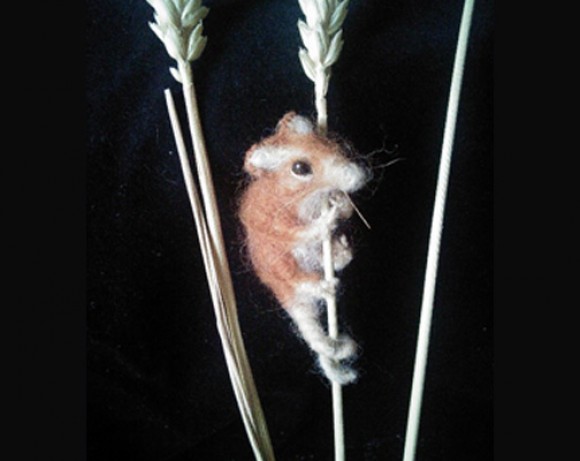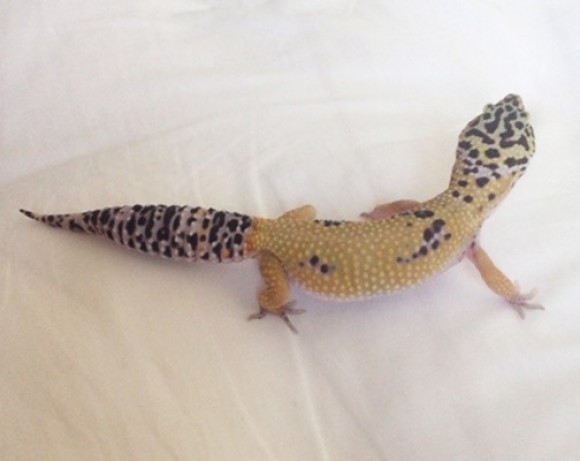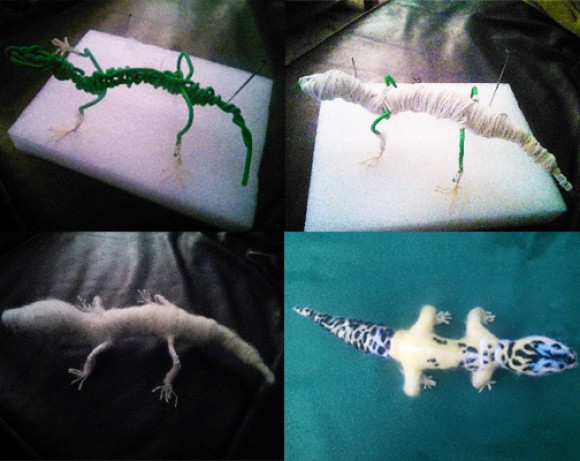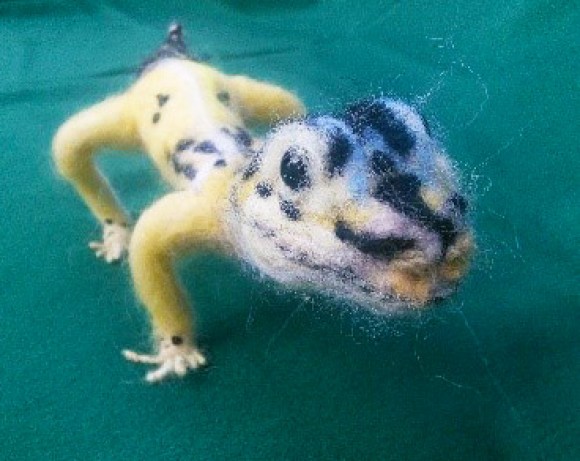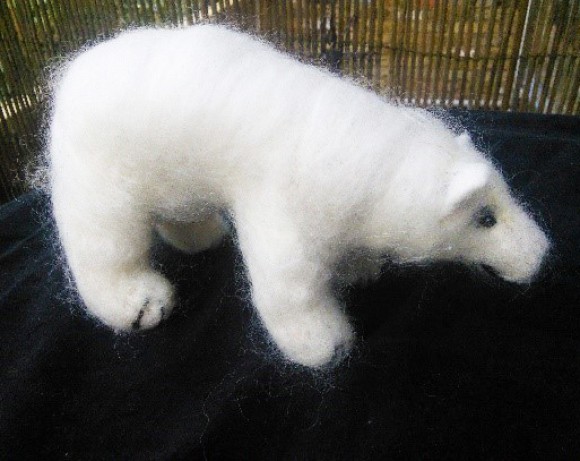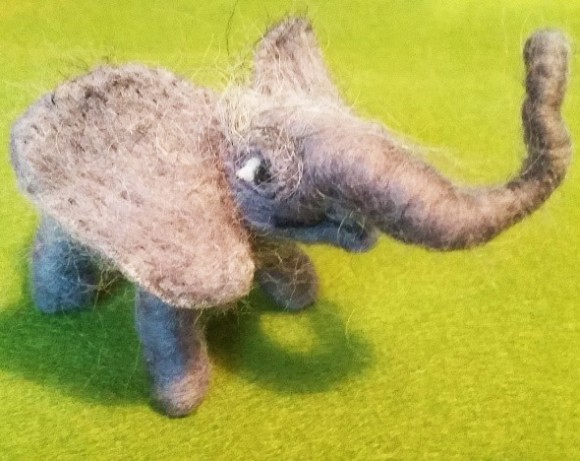| I have been able to encourage children to look more carefully at
animals though the handling collection. I’ve also helped them learn by
asking them questions and encouraging them to feel and experience the
animal. I have seen the wonder and excitement at being able to touch the
soft fur of a wild rabbit and the hard sharp teeth of a lion amongst
other treasures.
I have also been learning myself about the animals in the Natural History Gallery and the Nature Base. From day one of my Volunteering, I fell in love with the live harvest mice in the Nature Base and rushed home to try and make one of my own.
The inspiration for the felt creation is the harvest mouse in the HornimanNature Base I learnt about their prehensile tails which curl around the straw or grass they live in. They make spherical nests which they weave out of dry grass. The lucky Horniman mice have a fantastic home with a couple of tennis balls to hide in, which you can see in their glass case. I made my own mouse using a wire, felting wool and even some bits of an old brush for whiskers. I wanted him to look like the taxidermy examples in the Museum so I mounted him on some pieces of wheat!
By attaching the felt mouse to straw it makes it look like it is in its natural habitat One of my favourite animals is the gecko. This is a picture of a
family pet, a leopard geko, which I tried to copy. The pet family leopard gecko I started with a frame made out of wire to get the general shape of the animal. Then, I wrapped it up with string to make a “bind” just as a taxidermist does. Wool is then wrapped around to build up the body then the process of needle felting helps to add details and definition to the limbs. The needle felting needle has tiny notches along it to help tangle and mesh the wool fibres together.
A wire 'skeleton' lies at the heart of the animal and is covered in felt I used glass beads as eyes. I tried to get all the spot patterns to match the photograph of the real gecko. I also used the exhibits in the gallery to check to see that I had the gecko leg shapes correct and found out about a gecko which can fly!
The finished felt geko
Another felt creation - a polar bear
I have just been given a full fleece of Jacob’s sheep wool and will try to copy some of the skills of the nomadic people by wet felting the wool to make some slippers for winter! You can see some Inuit socks on the Horniman website which are made by wet felting. This fabric is still made into objects such as hats, clothing, tents, bags and rugs.'
A felt elephant with a lovely long trunk
|
